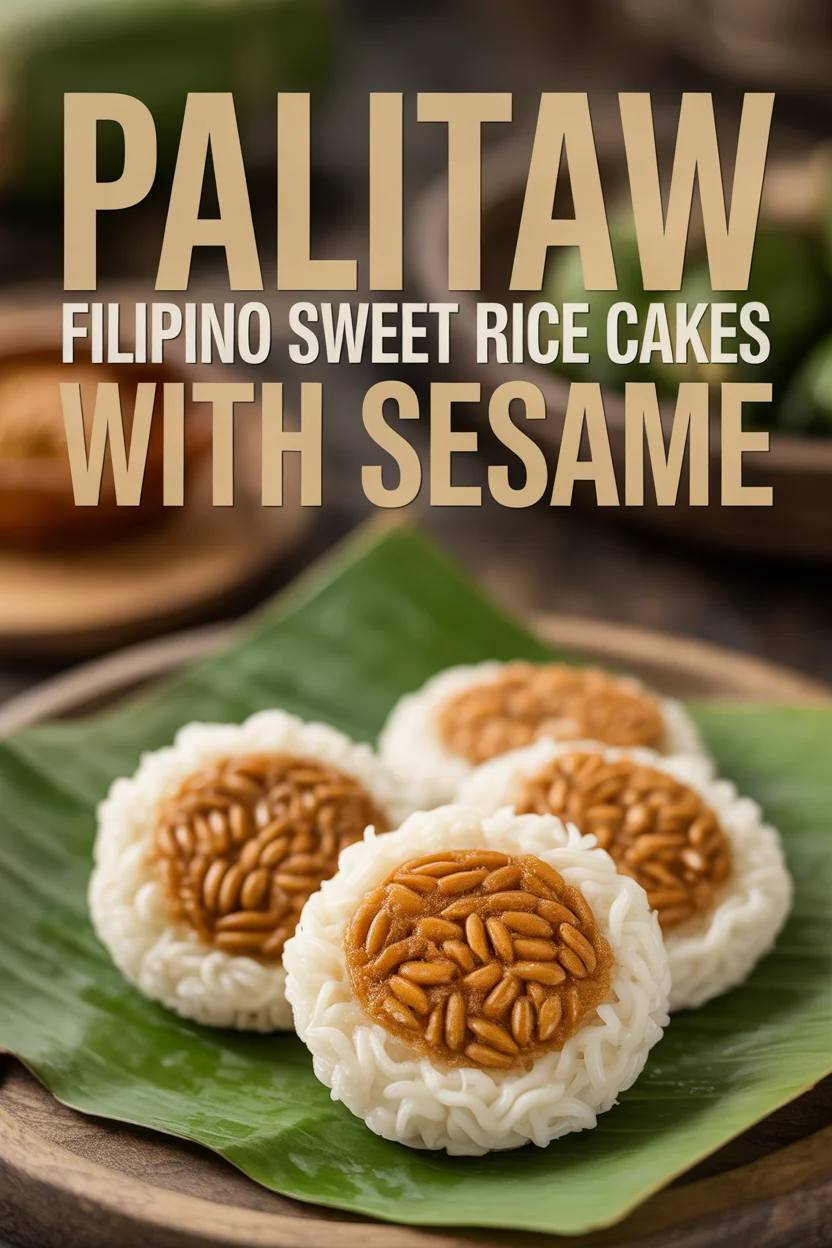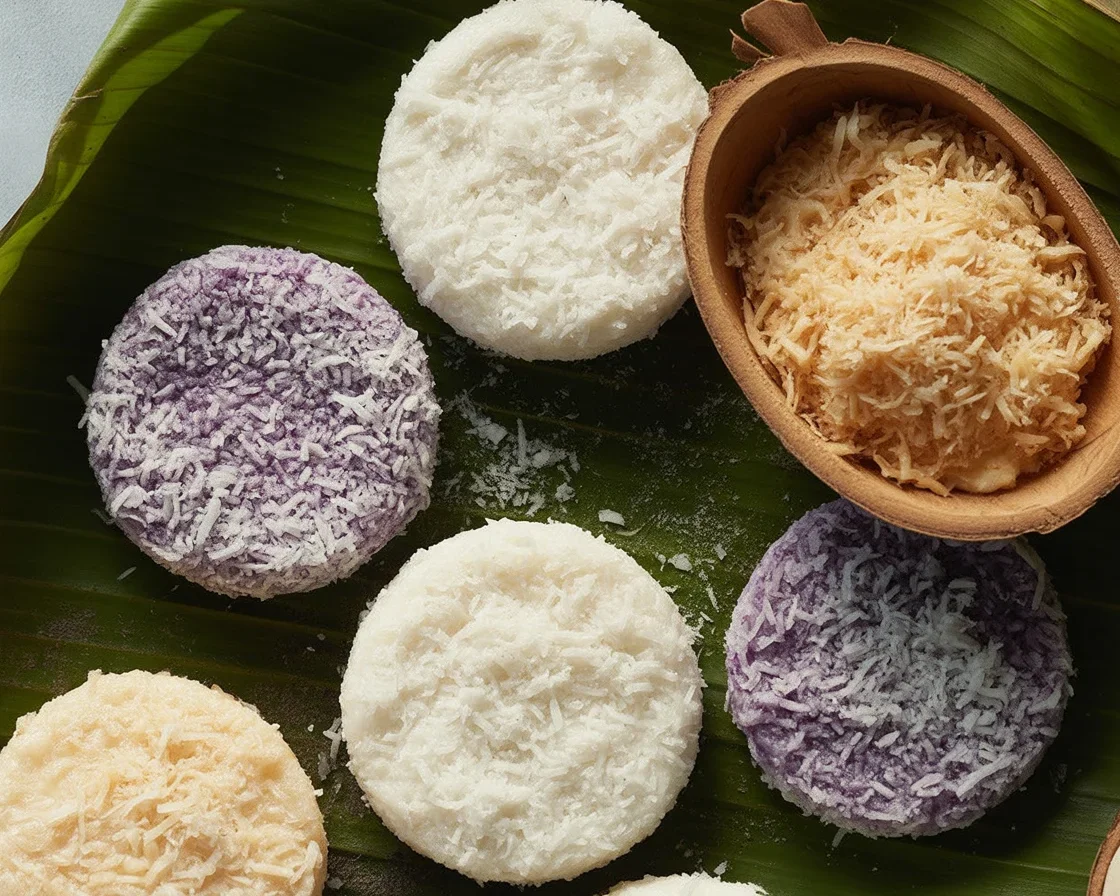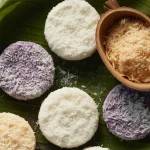- What Is Palitaw?
- Ingredients You Need to Make Palitaw
- Are Palitaw and Pichi Pichi the Same?
- Palitaw Recipe
- More to Love from The Kitchn
- Common Questions
If you’ve ever seen palitaw rice cakes at a Filipino potluck and thought, “What in the world are those chewy little cloud things?” Yup, been there. Honestly, I only made them the first time because they looked so cute and, well, I was feeling competitive about bringing the best snack. But wow. Instant hit. My family and friends grabbed them way faster than the brownies. So, if you’re curious what they actually are, how to whip up a batch, and how palitaw stacks up against the ever-confusing pichi pichi (happens all the time), read on.

What Is Palitaw?
If you ask me, palitaw is the humble hero of Filipino sweets. They’re soft, chewy rice cakes that basically float up when you cook them—literally, “palitaw” means “to float.” Good name for something that rises up in boiling water, huh? Anyway, about as basic as you can get: sticky rice flour, some water, and maybe a dash of patience. Once they bounce up, you roll ’em in grated coconut and toss on sesame seeds and sugar. That’s about it. The cool thing is you can eat them warm (my fave) or cold (great for the funky hot weather). People often think of palitaw as a snack, but honestly, they’re perfect for dessert or to cure a mid-afternoon slump. The texture alone is enough reason, but those sesame-sugar sprinkles? Chef’s kiss.
Palitaw is the treat I remember most from grandma’s kitchen. She’d let us drop dough in the pot, and we’d just watch for the little cakes to pop up like magic. Feels like coming home every single time.

Ingredients You Need to Make Palitaw
Good news for lazy folks (like me sometimes): you only need a few ingredients for palitaw. Oh, and most Asian markets carry everything. Here’s all you’ll want:
- Glutinous rice flour (DO NOT use regular rice flour unless you want crumbly sadness)
- Water (just regular water, nothing fancy)
- Grated coconut (fresh is best, but frozen works)
- Sugar (I like white, but you can get all fancy if you want)
- Toasted sesame seeds
That’s honestly the whole thing. If you wanna jazz up your palitaw a bit more, you can try a sprinkle of salt in the coconut or use muscovado sugar for a deeper taste, hah!
Are Palitaw and Pichi Pichi the Same?
Short answer? Not really. Palitaw and pichi pichi are like cousins who look kind of alike but don’t act the same at all. Both are Filipino sweet snacks, but palitaw is dense, chewy, and dropped into boiling water till it floats. Pichi pichi though—here’s where some people get tripped up—uses cassava (not rice!) and is steamed, not boiled. It jiggles when you poke it, and it’s more jelly-like. They both get coconut coating, but for me, palitaw is just way more satisfying with that chewy bite.
I can’t tell you how many times somebody grabs one and yells “Is this pichi pichi?” at the party. I just shake my head. “Nope! This one’s palitaw. Try both, but watch out. Palitaw goes fast.”
Palitaw Recipe
Alright, let’s get to it. I’m keeping this as human as possible so you don’t get lost (been there). Here we go:
- Mixing the Dough:
- In a big bowl, dump in about 2 cups of glutinous rice flour. Splash in water, little by little, and mix until you get a soft dough. The dough shouldn’t be too sticky—it should pull together and not stick to your hands like glue. If it does, add a pinch more flour. If it’s crumbly, add a tad more water.
- Shape the Cakes:
- Pinch off a lump (about the size of a golf ball). Roll it, flatten it into an oval disk. It sinks at first, but trust the process.
- Boil Water:
- Bring a pot of water to a gentle bubble. Drop the cakes in a few at a time. When they float up, it means they’re done (2-3 mins).
- Coat and Finish:
- Fish them out, drain well, and roll in grated coconut. Place them on a plate and sprinkle with sugar and toasted sesame seeds. Eat immediately or let cool. Your call.
Here’s a pro tip: Always toast those sesame seeds. Seriously, plain is fine but toasting makes the smell crazy good—everybody comes running.
More to Love from The Kitchn
Palitaw isn’t the only Filipino sweet out there to get obsessed with. Here are a few of my favorite ways to round out any merienda (snack time):
- Try pairing palitaw with salty snacks. Contrast is key.
- Want something even stickier? Give kakanin like bibingka or sapin-sapin a go.
- Add a side of fresh mango slices—the sweet-tart mix is unbeatable.
Trust me when I say: People will ask for this recipe. Just smile and say it’s a family secret, or share the love. Up to you.
Common Questions
Do I need to use fresh coconut for palitaw?
Nope! Frozen is totally fine. Just thaw it first. If you’re stuck, unsweetened shredded coconut works, but fresh tastes best.
Can I make palitaw ahead of time?
Yep. Store them in an airtight container, but the texture is best the day you make them. Microwave for a few seconds if they dry out.
What’s the difference between glutinous rice flour and regular rice flour?
Big difference. Glutinous rice flour turns chewy and soft when cooked, while regular rice flour just crumbs. Don’t swap them.
Can I freeze palitaw?
You can, but honestly, they’ll taste less fresh. If you really must, go for it—but expect a small hit to texture.
How do you toast sesame seeds?
Easy. Put them in a dry pan on medium. Stir for a few minutes until they get golden and start to smell nutty. Done!

Palitaw
Ingredients
Main Ingredients
- 2 cups glutinous rice flour DO NOT use regular rice flour
- 1-2 cups water Add gradually until the right dough consistency
Coating
- 1 cup grated coconut Fresh is best, but frozen works too
- 1/2 cup sugar White sugar preferred
- 1/4 cup toasted sesame seeds Always toast for better flavor
Instructions
Mixing the Dough
- In a big bowl, dump in about 2 cups of glutinous rice flour. Splash in water, little by little, and mix until you get a soft dough.
- The dough shouldn't be too sticky—it should pull together and not stick to your hands like glue. If it does, add a pinch more flour. If it's crumbly, add a tad more water.
Shape the Cakes
- Pinch off a lump (about the size of a golf ball). Roll it, flatten it into an oval disk.
Boil Water
- Bring a pot of water to a gentle bubble. Drop the cakes in a few at a time.
- When they float up, it means they’re done (2-3 mins).
Coat and Finish
- Fish them out, drain well, and roll in grated coconut.
- Place them on a plate and sprinkle with sugar and toasted sesame seeds. Eat immediately or let cool.

